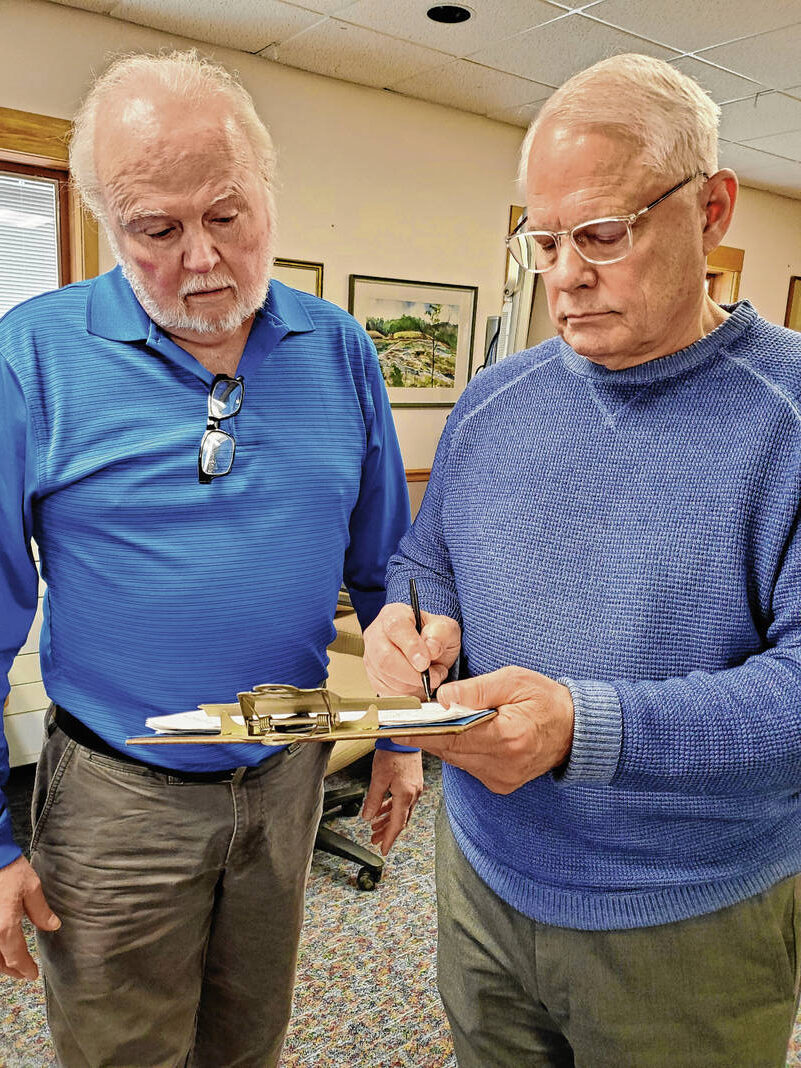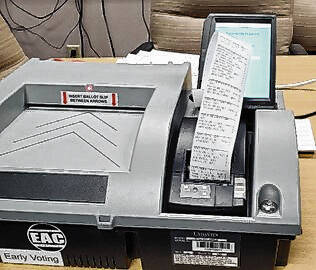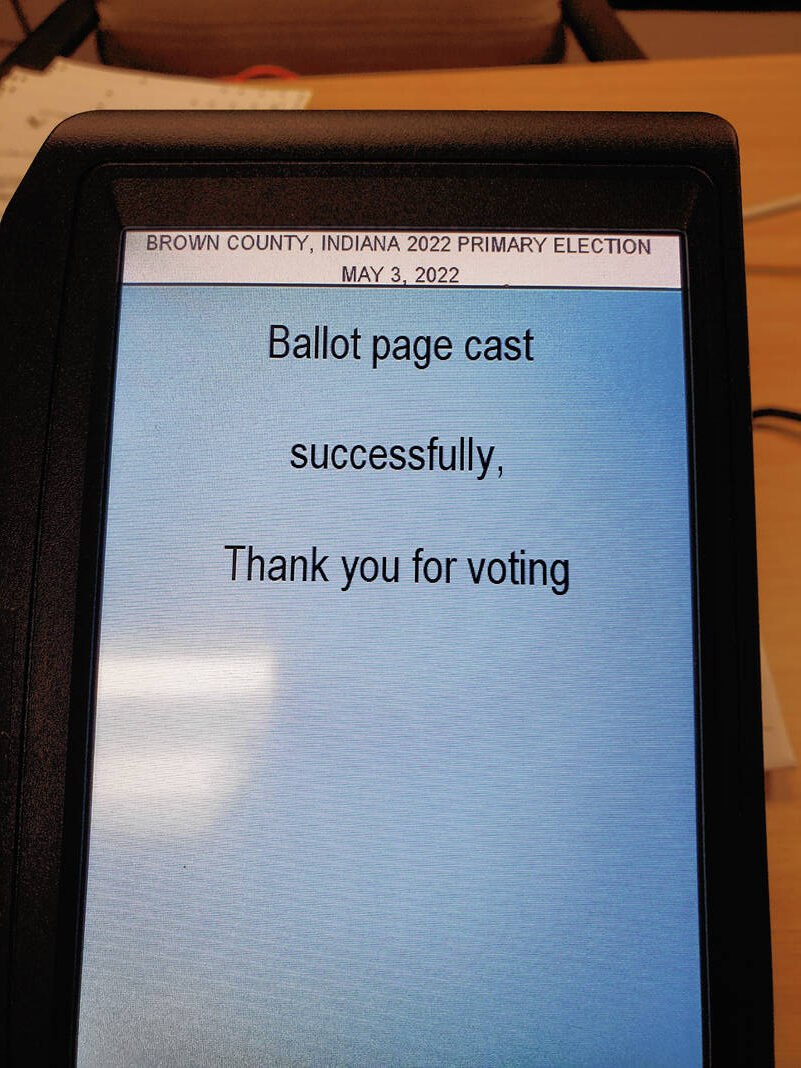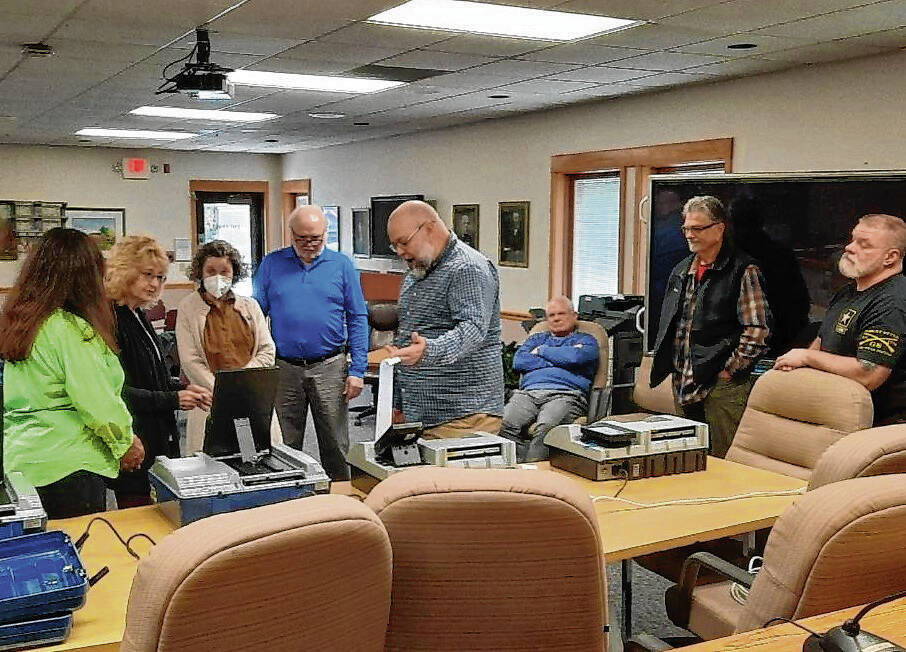By SHARI FRANK, guest columnist
Election Security is a hot topic because everyone wants to be certain that election results accurately represent votes cast.
Machines get tested to make sure that what goes in is what comes out: 20 votes in for candidate A, comes out as 20 votes for candidate A.
Indiana law requires county election boards to conduct a public test of its voting systems before “early voting” begins. The public test for Brown County was conducted March 29 in the Salmon Room of the County Office Building.
Public test of optical scan machines (ballot card tabulators)
Indiana law specifies steps every county must follow to test election equipment.
The State VSTOP (Voting System Technology Oversight Program) produces a randomized list of machine identifications to tell counties which machines they must test and how many to test. The actual test includes running sets of ballots through the optical scan machines to ensure their vote totals match the ballot totals.
In the test, scanners must also correctly identify ballots that are “over-votes.” If a ballot is marked for more candidates than allowed, such as two candidates are marked where only one is allowed, the scanner will stop the ballot from going through. A light up a message then says “over-vote.”
In an election, the voter is given the choice to re-do their ballot to correct the error and vote only for the candidate they choose or they may opt to let it go through, which would result in no vote for that office. In the public test, when an over-vote is detected, the “override” option is selected to let the ballot go through, and a “zero” vote is tabulated for the affected race on that ballot.
Voters should hand mark their paper ballot carefully. The optical scanners do not detect an under-vote unless the entire ballot is blank. If a voter forgets to vote for an office, the scanner tabulates a zero vote for the race that isn’t marked, but counts votes for correctly marked races.
If the entire ballot is blank, the scanner kicks back the ballot and gives a “under-vote” message. The voter may then fill in the ballot. Or if they intended to vote a blank ballot, a poll worker can press “override” to allow the ballot to be tabulated with zero votes. In the public test, the blank ballot is allowed to go through, so it counts as a ballot cast, but doesn’t change vote totals.
The Freedom Vote is also tested as one of Brown County’s election machines. Freedom Vote is a great name for this unit because it gives people with limited vision or other impairments the freedom to vote by providing accommodations such as large print or voice assistance.
Freedom Vote is an electronic marking device, like an electronic pencil. It does not tabulate votes, it just marks ballots. On a computer screen, the voter selects the ballot candidates, reviews the completed ballot then prints it out. The voter has a chance to review the printed ballot again to make sure it matches how they voted on the machine. No votes are counted yet.
The printed machine marked paper ballots are then counted the same way as the paper ballots voters mark by hand. All paper ballots are run through the optical scanners to tabulate vote totals. In the public test, totals were verified on the Freedom Vote ballot batches, just as they were for the hand marked ballot batches. No errors were found.
County election equipment certified
Brown County election equipment machines are certified.
Before any test ballots are run on optical scanners, a “zero tape” is run from each machine being tested to show it starts with zero votes for every race. This is also done on Election Day for every machine.
Mark Williams and Kevin Fleming, the two appointed members of the Brown County Election Board, observed the public test, as required by law. When the test is completed and vote totals verified, they certify the results meet the requirements of state law.
At no time is the election equipment connected to the internet. Immediately following the successful public test, the voting equipment is sealed and prepared for delivery to the polling location for use in the primary election, which is one more important step to keep elections secure.
Know your candidates
Do you know your candidates? Vote411.org provides candidate responses to questions on issues – in their own words – for local, state and national offices. Go to Vote411.org, select “See what’s on my ballot” then enter your address, select a party — or leave the default to see all candidates — and click “Go to my races.”
Did you know Brown County is in a new district for Indiana State House of Representatives since new maps were adopted by Indiana legislators with 2020 census data? We were in District 65, but now Brown County is in District 62. Check out the candidates for our new state representative on Vote411.org.
The district for our U.S. Congressional District 9 has also changed. It’s still District 9, but the geography is very different, stretching all the way to the Ohio border. Check out District 9 candidates on Vote411.org.
For local races, you can also visit the LWV Brown County website to find links to virtual candidate forums held last month for the Brown County Commissioner District 2 and Brown County District 4 races: www.lwvbrowncounty.org.
Let’s make Brown County the highest voter turnout county in Indiana. Planning how you vote increases the likelihood you will vote. How will you vote? Here are the options:
In-person April 5 though noon May
Absentee by mail (apply by April 21)
In-person on primary Election Day May 3 from 6 a.m. to 6 p.m.
Find voting hours, where you vote or get your application to vote absentee by mail at indianavoters.in.gov or call the Brown County clerk’s office at 812-988-5510 or 812-988-5757 for election information. You can also email [email protected].
Shari Frank submitted this column on behalf of the League of Women Voters Brown County. Frank is the president of the LOWV Brown County. She can be reached at [email protected].









